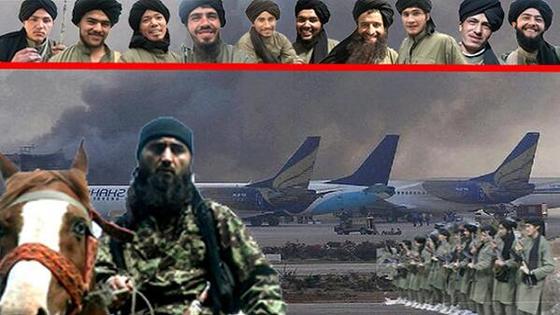The Islamic Movement of Uzbekistan said it executed the June 9 suicide assault on a terminal at Jinnah International Airport in Karachi that killed at least 18 Pakistanis, including 11 security personnel, and 10 jihadists.
Usman Ghazi, the emir of the IMU, issued a statement on the group’s website claiming credit for the deadly attack, which had forced the Pakistanis to shut down flights at the airport for 12 hours. Ghazi’s statement was obtained by the SITE Intelligence Group.
“Yesterday 11th of Sha’ban (9th of June 2014), at midnight of Monday ten brave martyrdom seeking mujahids of Islamic Movement of Uzbekistan wearing their explosive-filled vests attacked very special section of Karachi International Airport of Pakistan which is not visible to the common folk visiting the Airport,” Ghazi said, according to SITE.
The IMU leader also claimed that the operation “destroyed many of the fighter jets, American drones and other military planes which were in that special section ….” No aircraft are reported to have been destroyed during the operation.
Ghazi said the Karachi airport attack was executed “as the revenge to the latest full-scale bombardments and night attacks with fighter jets by Pakistan Apostate Army which started in 21st of May, 2014 in Waziristan.” He is referring to the airstrikes in North Waziristan that have even angered Hafiz Gul Bahadar, the “good Taliban” commander who is favored by the Pakistani state. Bahadar has threatened to end his peace agreement with the government if the attacks do not cease.
Ghazi threatened further attacks and said the group also has a support network outside of the tribal areas.
“This martyrdom operation of ours is neither the first one nor the last one,” he said.
“We are not alone in our sacred jihad … today Islamic Movement of Uzbekistan has many partners cooperating in its jihad not only in the Tribal Areas, but also in other cities and villages of Pakistan,” he continued.
The statement was accompanied by pictures of the suicide bombers and various photographs of the assault on the airport.
Ghazi’s statement supports claims by Pakistani officials that Uzbek nationals were involved in the attack.
The attack had initially been claimed by the the Movement of the Taliban, which said it was carried out to avenge the death of former emir Hakeemullah Mehsud as well as to punish the government for launching airstrikes in North Waziristan.
While the IMU and Taliban’s claims to the attack may seem to conflict, it is very unlikely the IMU could have operated in Karachi without the direct support of the Movement of the Taliban in Pakistan. The Taliban has an extensive support network in the southern Pakistani city.
Additionally, the IMU has conducted joint operations with the Taliban on both sides of the Afghanistan-Pakistan border in the past, including suicide assaults such as this week’s attack on the international airport in Karachi.
In one of the more prominent attacks, IMU/al Qaeda leader Bekkay Harrach, who was also known as Al Hafidh Abu Talha al Almani, was killed while leading an assault on Bagram Airbase in May 2010. Harrach led a team of 20 fighters assembled from the ranks of al Qaeda, the Pakistani Taliban, and the Islamic Movement of Uzbekistan, according to his martyrdom statement. Before his death, Harrach produced propaganda for al Qaeda in which he threatened to attack Germany.
The IMU has also claimed it executed the May 29, 2013 suicide assault on the governor’s compound in Panjshir in concert with the Afghan Taliban.









1 Comment
I think the reason the Karachi attack was less than “successful” (no passengers killed or planes destroyed) is because the IMU terrorists didn’t have real-time, outside command and control like the Mumbai attackers had. The ISI were essentially “hands-on” in Mumbai (sanctioned foreign target) and “hands-off” in Karachi (their own country). The Islamabad airport attack cell that was turned away in August 2013 seemed a lot better prepared, at least communications-wise. Maybe those guys were closer to AQC or just had better planners. They were ready to jam and/or eavesdrop on Pak responder communications. These IMU “martyrs” got killed before they even saw their targets.
What do these facts tell us about the attacks?
Perhaps that the IMU are not directly, operationally connected to AQ Core or the ISI and their techies and electronic equipment, but act in Pakistan as sort of ancillary arm of AQ, plausibly deniable by or at least somewhat distant from Z and Co. Z cannot openly bite the hand that feeds him, so any attacks in Pakistan will not be traceable to the Core, which is actively planning more (foreign) attacks in concert w the ISI.
On a somewhat related side-country note, is anybody else bothered that Abdullah Abdullah was just nearly killed in precisely the same manner as Benazir Bhutto was killed? Will this cycle of killing ever end?